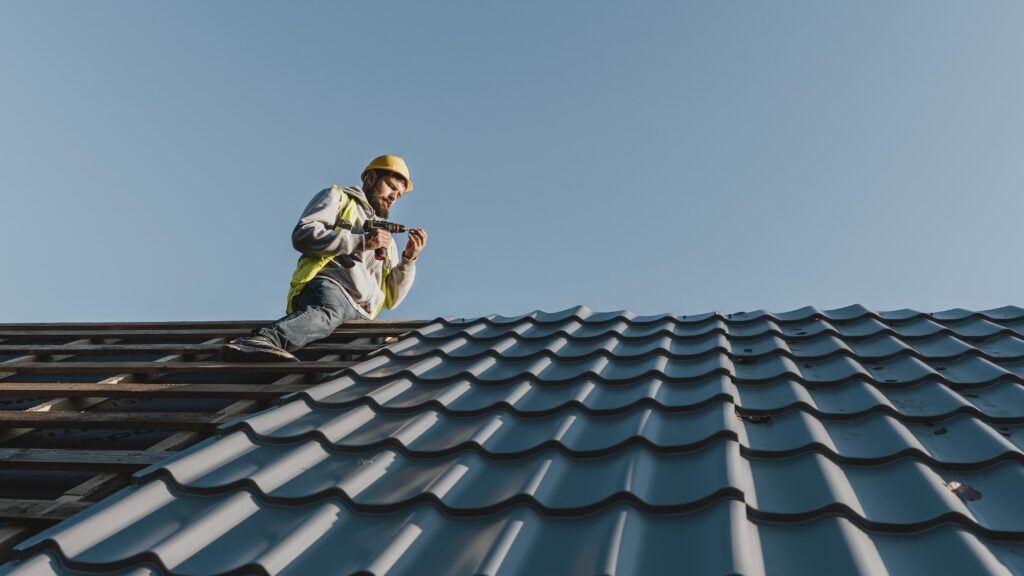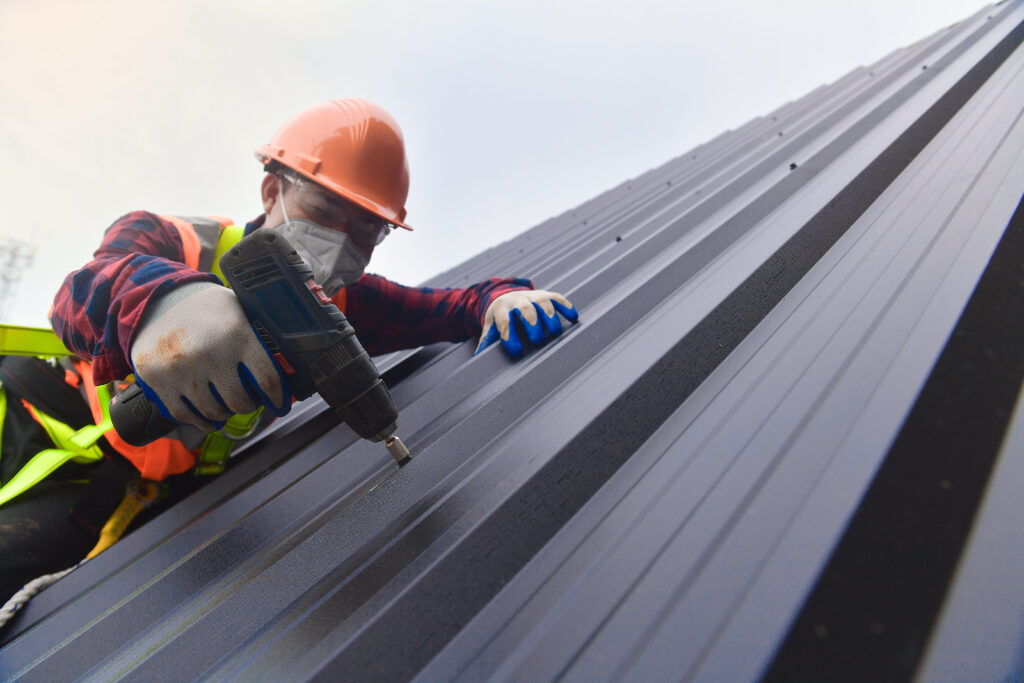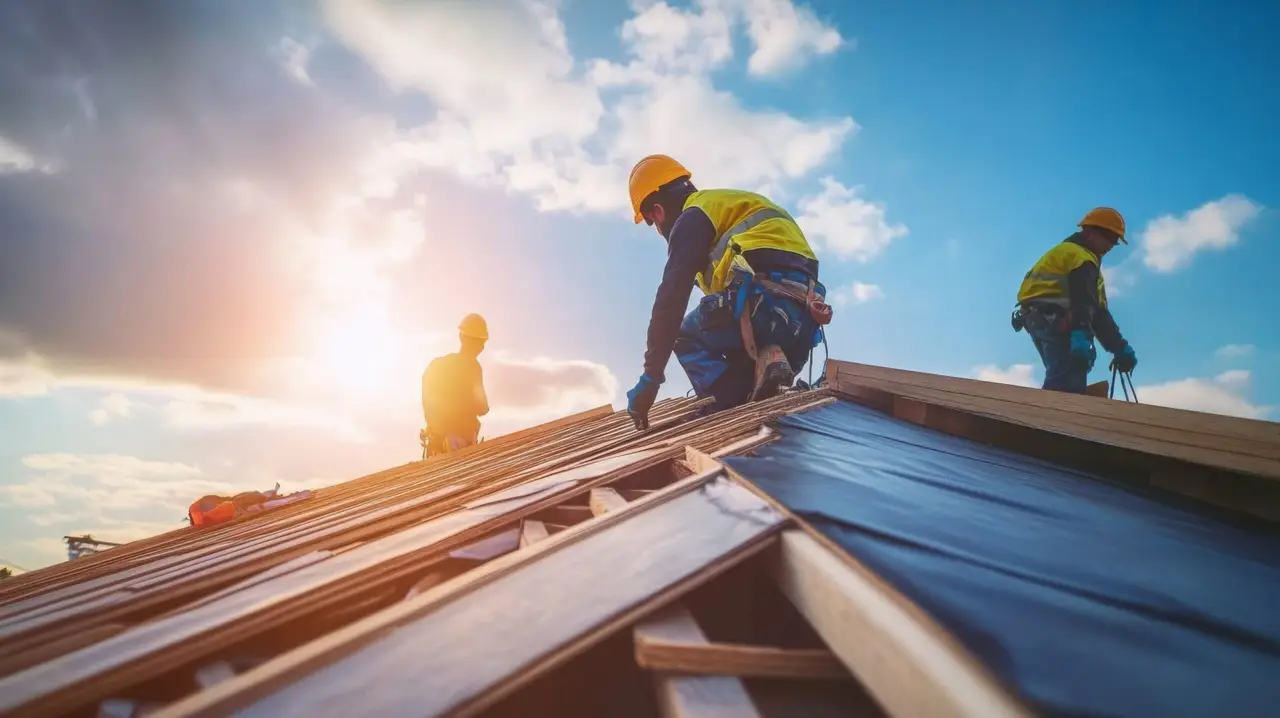Introduction to Roof Pitch and Slope
If you have ever wondered what is the lowest pitch for a shingle roof, the answer matters more than you might think. Your roof slope decides which roofing materials you can use, how well your roofing system handles water drainage, and how long it will last. Go too flat and water lingers, snow piles up, and you increase the risk of leaks or moisture penetration.
The roof pitch is measured as the rise over run ratio. For example, a 4:12 slope means the roof surface rises 4 inches for every 12 inches of horizontal distance. Steeper roofs shed water faster, resist wind driven rain, and show off premium designer styles better because the sun’s rays create more visible texture. Lower slope roofs require more care in the installation process to ensure optimal performance.
Homeowners can use a handy roof slope estimator or a tape measure to check the slope on an existing roof. Once you know the numbers, you can compare them to building codes and shingle manufacturer’s installation instructions to find out if your pitch meets the minimum slope requirement for asphalt shingles. The absolute minimum slope allowed for an asphalt shingle roof is 2:12. That is the minimum pitch where installing asphalt shingles is code compliant and covered under warranty if installed correctly.
Understanding Roof Slope Requirements
The minimum slope for an asphalt shingle roof is 2:12. Anything less is considered a flat roof or very low slope and needs alternative roofing materials like a membrane roof made of ethylene propylene diene monomer (EPDM) or polyvinyl chloride (PVC). These materials are designed for commercial roofing, medical facilities, and some residential roofs where the slope is too low for shingles.
Here is how roof slopes are generally classified:
- 2:12 to 4:12 – Low slope roof. Needs double underlayment or a water shield across the roof deck to prevent lateral water movement and leaks
- Above 4:12 – Standard slope. A standard shingle installation with one layer of underlayment usually meets minimum slope requirements.
- Below 2:12 – Flat roofs or very low slope. Use best roofing materials for flat applications, like membrane systems.
- Most residential roofs in North America are between 4:12 and 9:12. These pitches are ideal for asphalt shingle installation because they drain well, show off architectural shingles, and reduce long-term weathering.
If your roof is a low pitch roof between 2:12 and 4:12, you must follow shingle manufacturers’ instructions for a double layer underlayment or full water shield. Skipping this step will void warranties and can lead to leaks, especially in our Idaho and Utah climate.
Asphalt Shingle Roof Considerations
Asphalt shingle roofs remain one of the most common roofing materials in the roofing industry. They are affordable, come in many styles, and perform well when matched to the right slope.
- Minimum slope requirement: 2:12 with double underlayment between 2:12 and 4:12.
- Not recommended: Slopes below 2:12 where a metal roof or membrane roof is a better option.
- Shingle installation options: Architectural shingles for style and depth, or three-tab shingles for a more traditional look.
- Maintenance: Even the best shingle roof needs periodic checks for damage from wind driven rain, ice dams, or environmental factors like UV exposure.
For a low slope roof, the installation process is more than just laying shingles. You need a water shield at the eaves, sealed valleys, quality flashing, and possibly six nails per shingle for extra hold. This is especially important on a low sloped roof that sees snow, rain, and ice.

Why Climate Matters
In Southeastern Idaho, Cache Valley UT, and Western Wyoming, roofing materials have to handle three main challenges.
1. Snow load and ice dams
A low slope roof holds snow longer. When heat escapes from inside the home, that snow melts, runs down the roof surface, and refreezes at the eaves. This creates ice dams that trap water. Proper insulation, ventilation, and a water shield under your asphalt shingles help prevent damage.
2. Wind driven rain
Strong winds can push water uphill on a low pitch roof, forcing it under the shingles. A double layer of underlayment or a full-deck water shield protects the roof deck from moisture penetration.
3. Freeze-thaw cycles
Any water that gets under a shingle can freeze, expand, and lift the material. Over time, this worsens and creates leaks. The right installation process, including sealed flashing and the required minimum slope, keeps this from happening.
Installation: Getting It Right the First Time
When we install asphalt shingles on a low slope roof at Roof Rescue, here is how we do it to meet minimum roof pitch and installation instructions:
1. Measure the roof slope using a tape measure or pitch card.
2. Follow shingle manufacturer’s installation instructions exactly.
3. Use double underlayment or a full water shield across the roof deck.
Install ice dam protection at the eaves and sometimes further upslope on low slope roofs.
4. Seal all valleys, walls, and penetrations to block lateral water movement.
5. Vent the attic correctly to reduce ice dams and ensure optimal performance.
Following these steps keeps the roof in compliance with building codes, maintains warranty coverage, and delivers optimal performance for decades.

The Bottom Line
You can install asphalt roof shingles on a 2:12 slope, but it must be done right. That means meeting the minimum slope requirements, using the correct underlayment, and adapting to local environmental factors. Go any flatter and you will need alternative roofing materials like a membrane roof or metal roof.
At Roof Rescue, we have been providing roof replacement and repair since 2014. We work on residential roofs, commercial roofing, and even specialized projects like medical facilities. We know how to build a roofing system that holds up in our climate, from flat roofs to steeper roofs, and from asphalt shingle installation to membrane roof systems. Whether you need a new roof or a fix for an existing roof, we can provide installation considerations, explain your options, and help you choose the best roofing materials for your slope.
Call Roof Rescue today for a free estimate. We will measure your roof, provide pitch estimator cards if needed, and make sure your roof is built for optimal performance, no matter the slope.
Mark Franklin, owner of Roof Rescue in Idaho Falls, Idaho, has been a trusted name in roofing since 2014. Serving Idaho, Montana, Wyoming, and Utah, Roof Rescue specializes in commercial and residential roof replacement and installation. Recognized for community initiatives like the “Operation Roof Rescue” program, which provides free roofs to local heroes, Mark combines professionalism with a passion for giving back. With 16 years of industry experience, an A+ Better Business Bureau rating, and glowing customer reviews, Mark’s leadership embodies quality and community-focused service.



